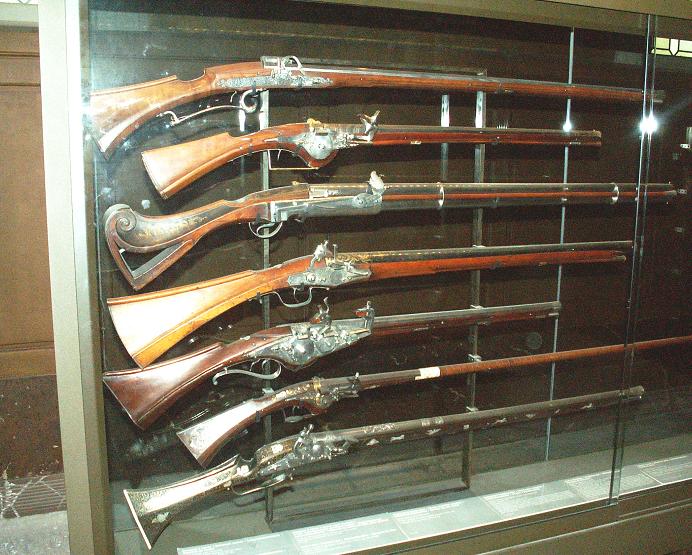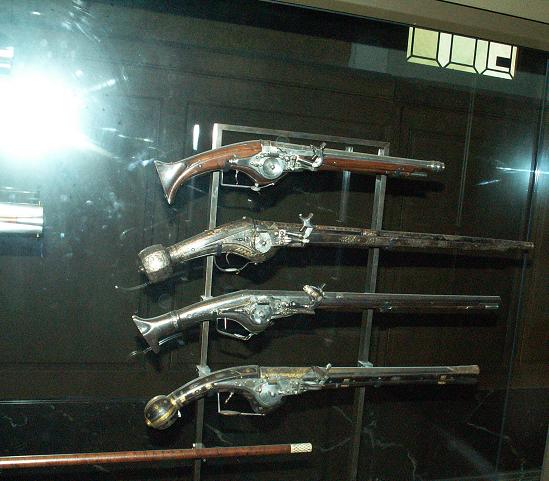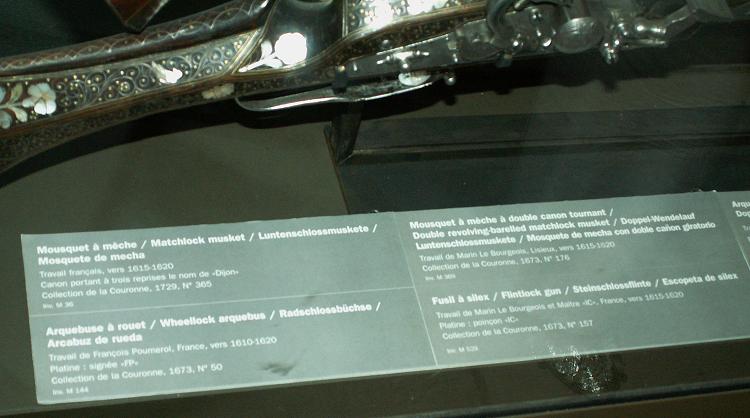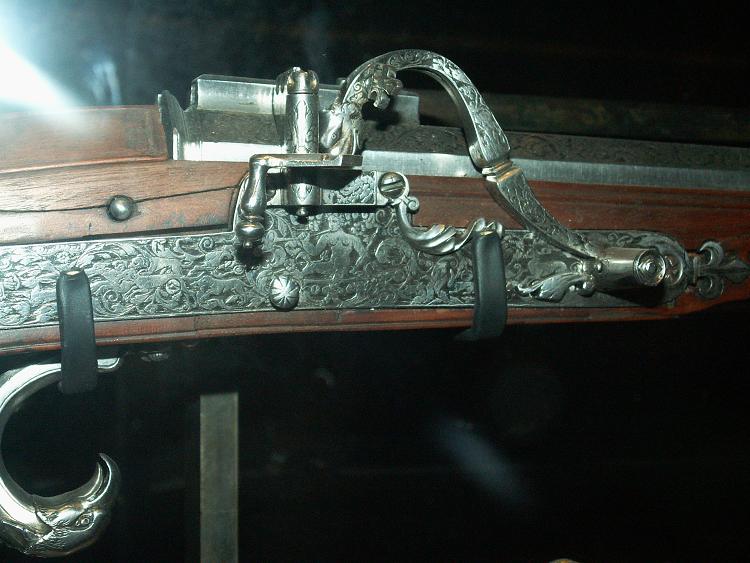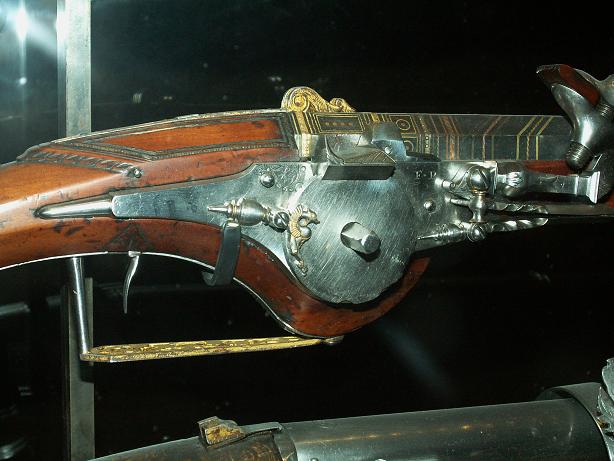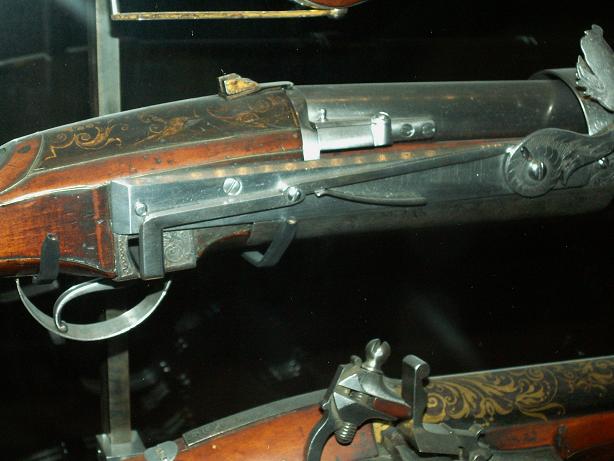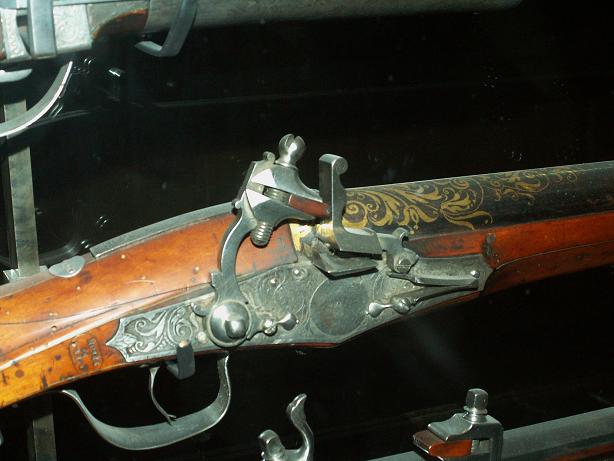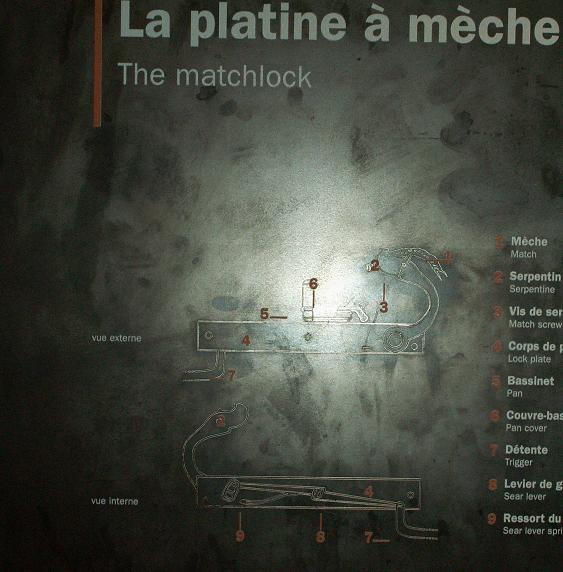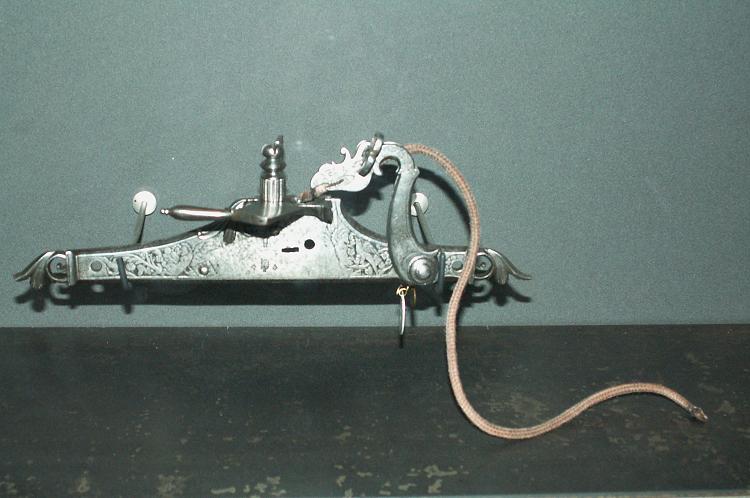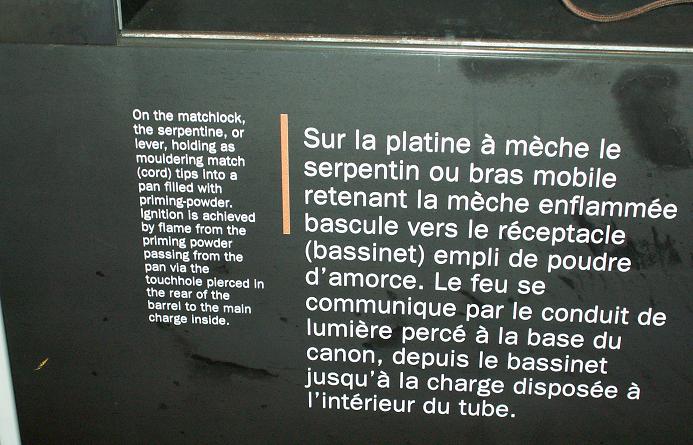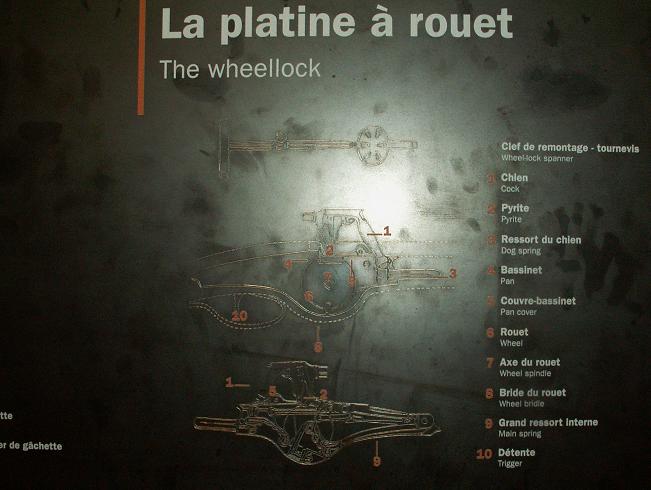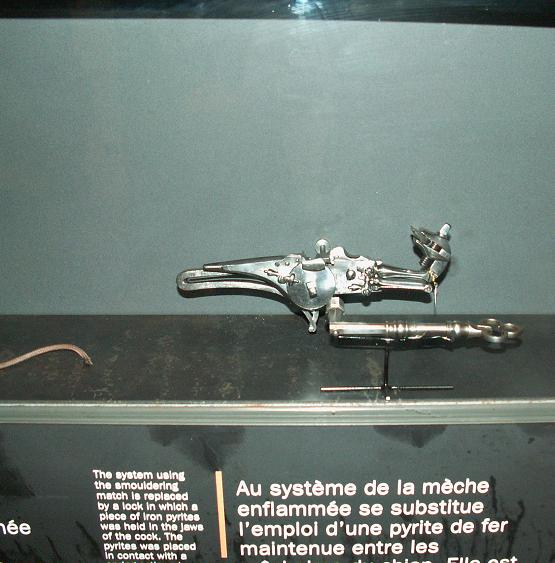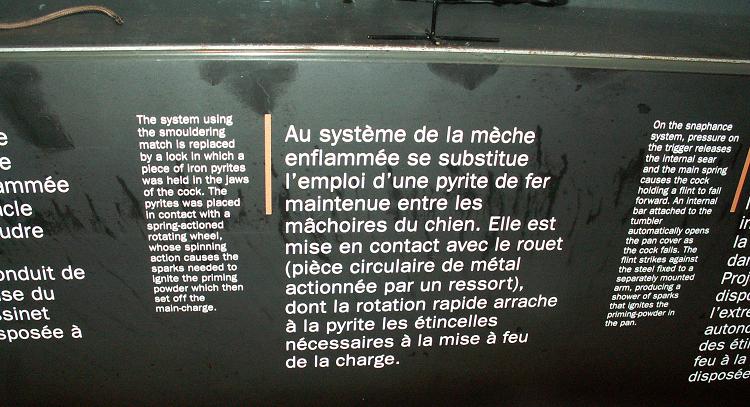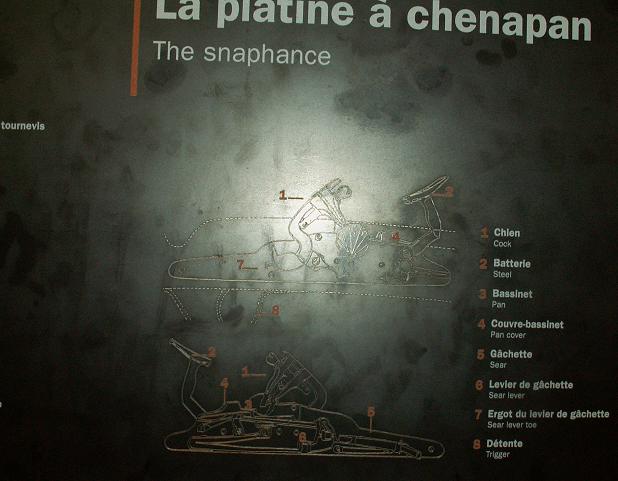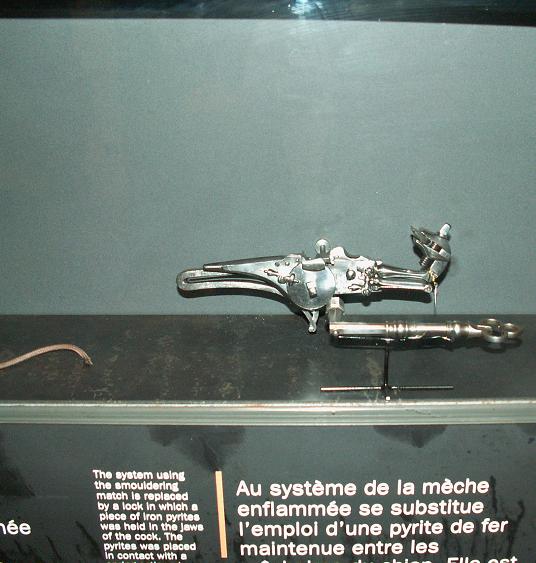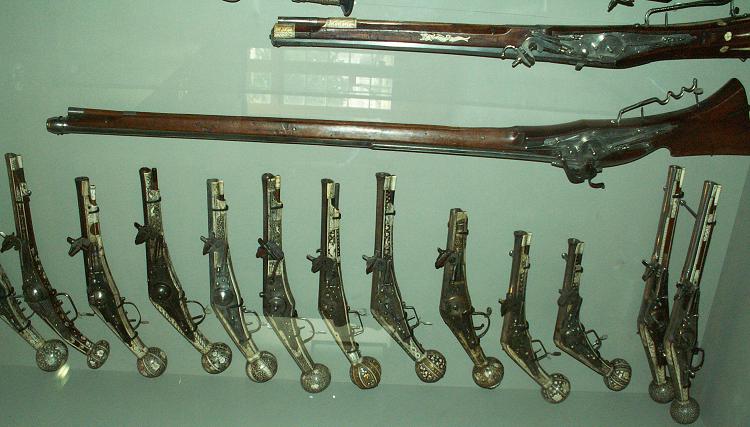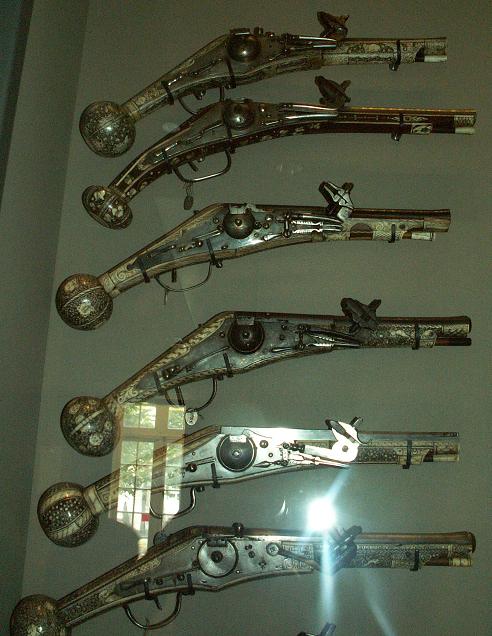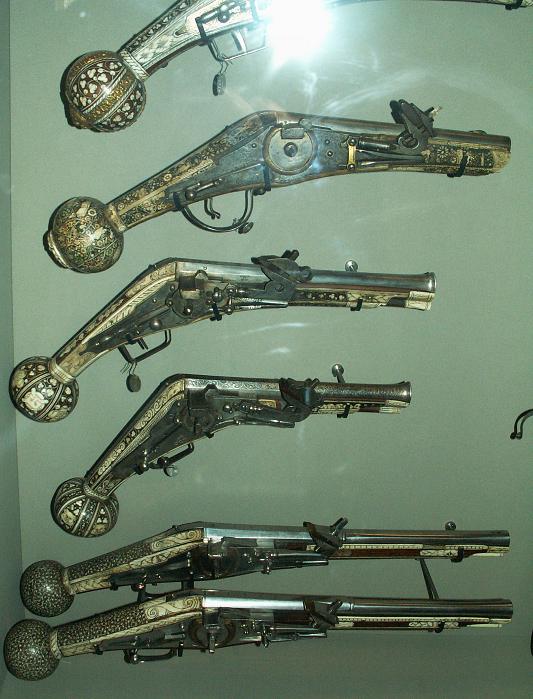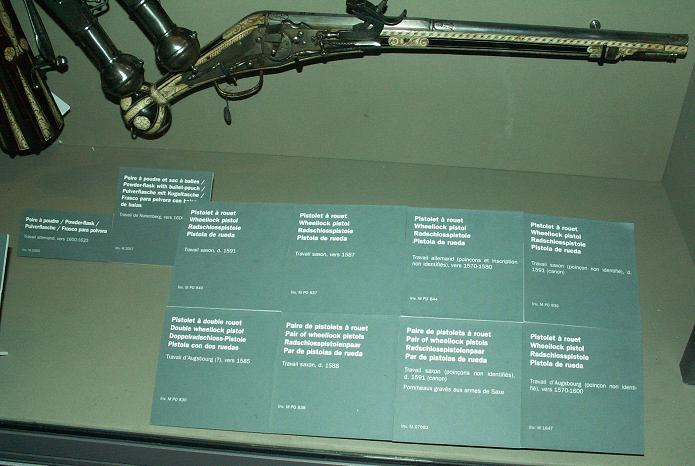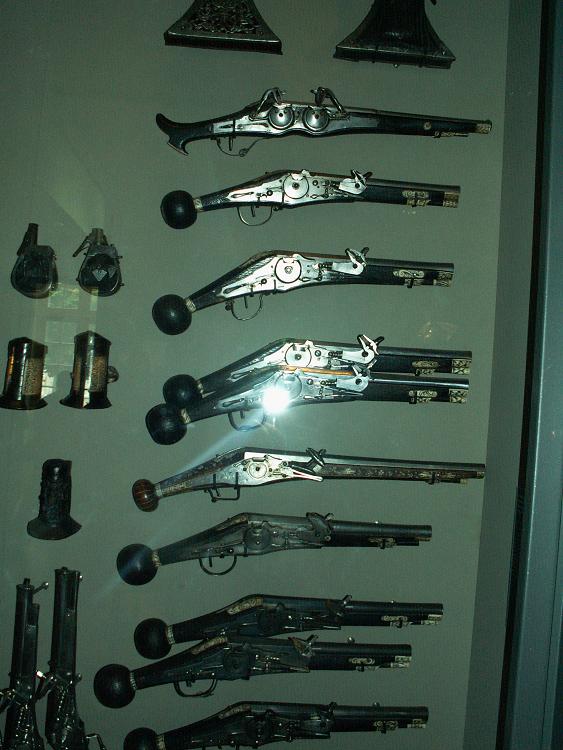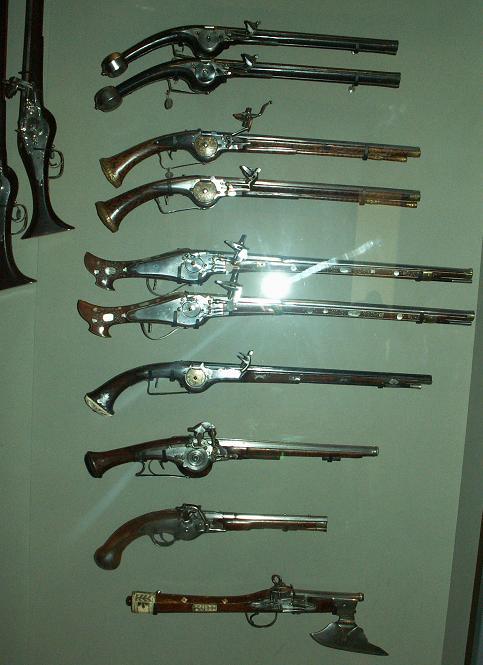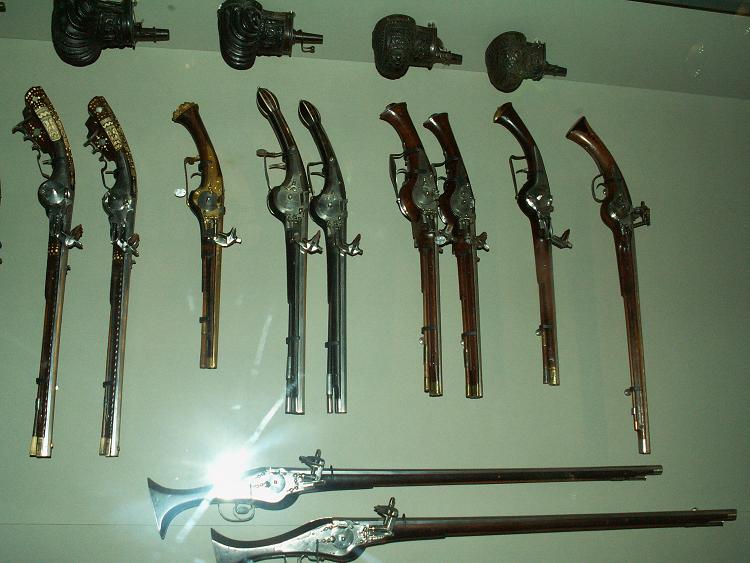Posts: 1,191 Location: Kingston, Washington
Mon 10 Sep, 2007 9:03 am
Manouchehr;
Again, thank you for the wonderful photographs. It's always nice to see items that aren't pictured in every book out there!
Per your question, the mass of the wheellock pistols (and carbines as well) shown in your photo's of the display are of German, or at least Germanic, style. The ball-butt "Puffer" was a very popular weapon, and many show the full flowering of Mannerist art with not only the rich inlays of bone and ivory, but also in the basic form of the ball-butt. Contrary to popular belief though, the ball was not a form of a club, but at best to provide a firm purchase for pulling the pistol from the saddle holster while wearing heavy gauntlets.
I do wish to point out something of interest, which is that while the pistols shown for the most part in the later photo's are all German, many of the earlier photo's are of French-style pistols and carbines. The detached lockplate will show the difference. This is the French-style lock, with the much larger mainspring showing from the back, with a very small lockplate:
[ Linked Image ]
And here is the lock mounted on a weapon:
[ Linked Image ]
It makes for a very much smaller lockplate, and for a much more graceful stock than the German-style locks which had the mainspring mounted on the lockplate. Here is one of the photo's of German-style locks mounted on their pistols:
[ Linked Image ]
The German style is probably quite a bit stronger, but the French-style is certainly more graceful. One may note that most 17th-Century wheellocks, while using the German-style mechanism with the mainspring fixed to the lockplate, had a very French-style stock with the deep belly to correspond to the depth of the wheel, so though the French version of the wheellock didn't spread far, the basic look of it did.
Cheers!
Gordon
